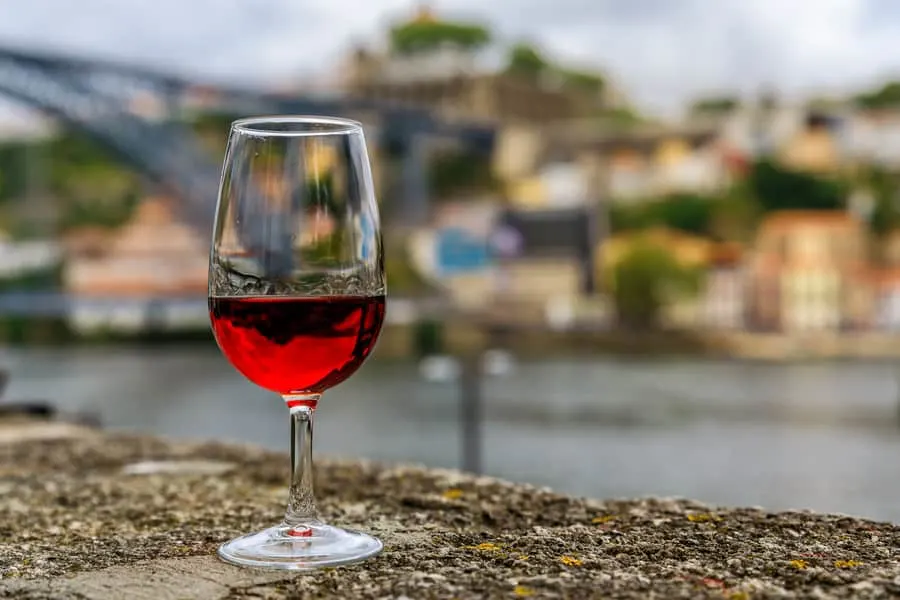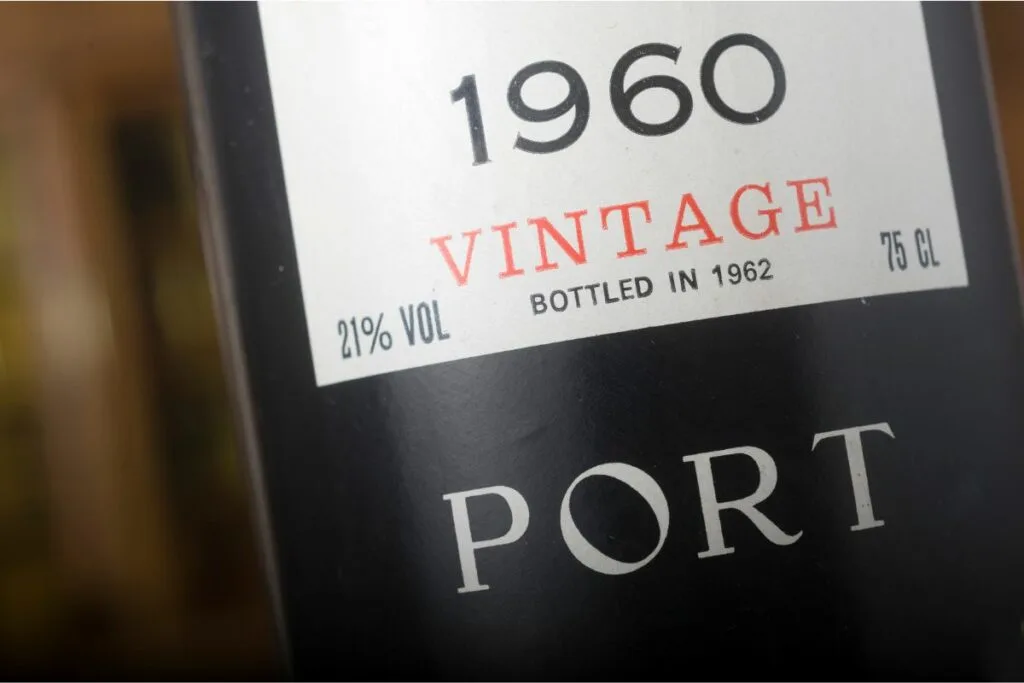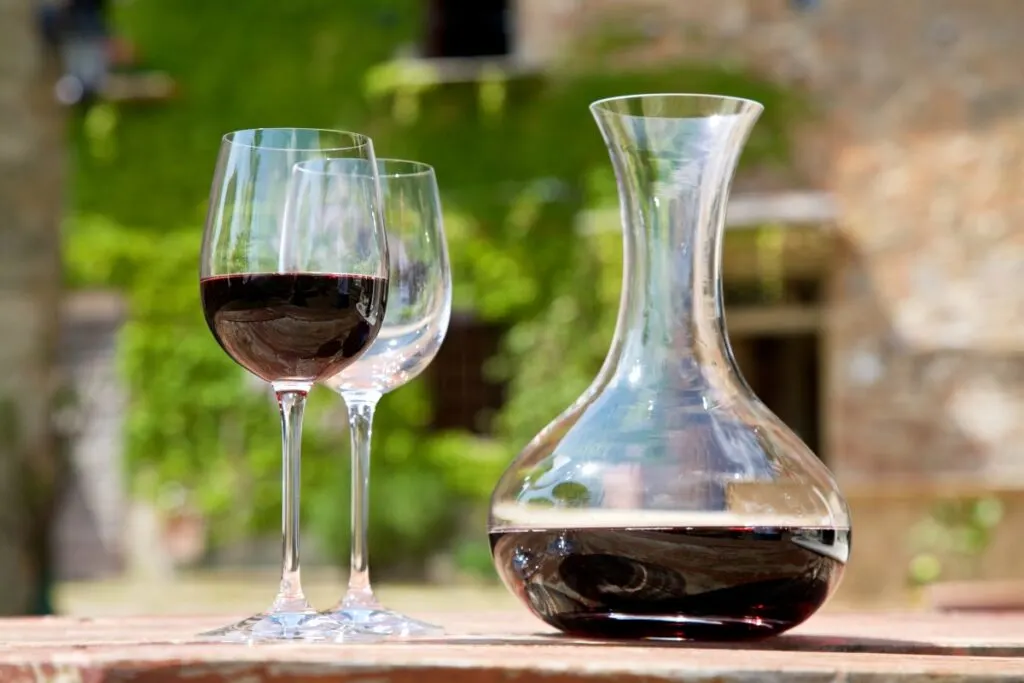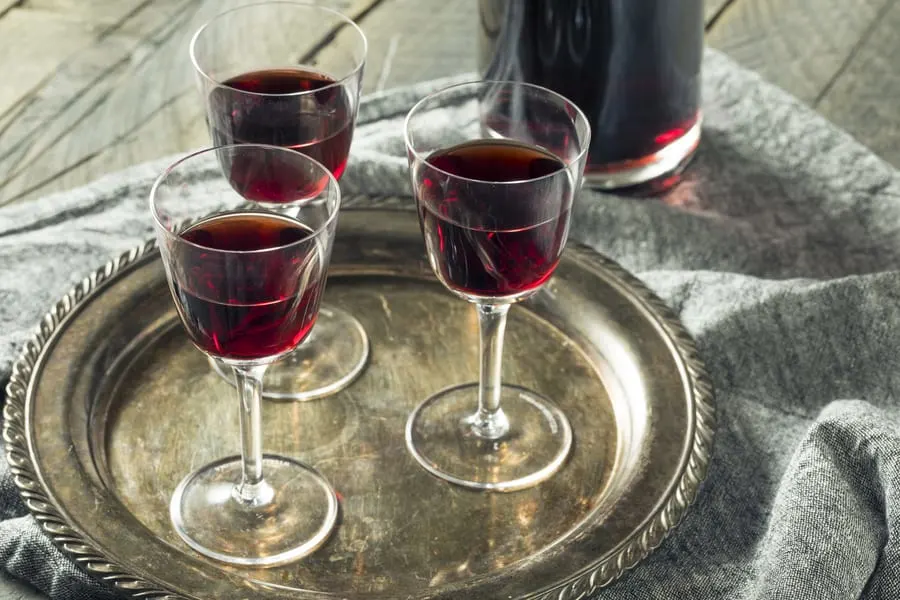As an Amazon Associate, I earn from qualifying purchases with no additional costs for you.
Port wines are beautiful wines that are loved by so many. If you want to enjoy ports, knowing how to properly store, age, and serve your port wines can seem complicated. So how should you store port?
Port wine should be stored inside a wine refrigerator at 50°-55°F, around 65% humidity, in complete darkness with bottles lying down and labels facing up. Both white and rosé port should age 2-3 years, the ruby port should age 3-5 years, and the tawny port can age indefinitely.
Opened port wines should be stored in a refrigerator with a wine preservation system to help the wine from losing freshness.
There are a lot of factors to take into account when storing and serving port wines. Ports are gorgeous wines and I want to make sure you can enjoy them to their fullest.

TIP: If you want to check out the best refrigerator for wine storage, I recommend trying out the Avation (18 bottles) compressor refrigerator with Wi-fi smart app control cooling system. You can find this refrigerator by clicking here (Amazon link).
What is Port Wine?
Port wine originally hails from Portugal, and it is typically known to be a sweet, red wine, although some Ports are also made in a dry or semi-dry style. White grapes are used to make this delicious wine as well.
The Douro Valley is the only appellation in the world that can legally produce what is called, “Port Wine”. With over 2,000 years of winemaking history, this is thought to be the most ancient wine-producing region in history.
There are over 100 grape varieties that are used in the production of port, but the 5 most common are Tinta Barroca, Tinta Cão, Tempranillo, Touriga Francesa, and Touriga Nacional. Unlike traditional red wines, a neutral grape spirit or un-aged brandy is added during fermentation, to raise the alcohol level and to halt the fermentation process.
The port is then transferred to oak barrels for aging. This step is what makes the distinction between different types of ports. Many port wines age well and can be stored for years to achieve their full potential.
Recommendation box: Everything you need to enjoy your wine as much as possible. All recommended products are personally tested and regularly used by experts from this website (Amazon links):
> Ivation Wine Cooler – Energy-efficient wine cooler for 18 bottles with Wi-fi smart app control cooling system.
> Wine Rack – Beautiful, elegant wood rack for up to 7 bottles and the choice of vertical or horizontal storage.
> Durand Wine Opener – Classic vintage wine opener (we like all these classic staff).
> YouYah Iceberg Wine Decanter – The most beautiful and handy wine decanter we personally use.
> Bormioli Rocco Wine Glasses – A set of eight elegant and traditional wine glasses made in Italy.
> Vintorio Wine Aerator – Simple but really useful wine aerator for a reasonable price.
> The Original Vacu Vin Wine Saver – The best wine saver on the market in a package with two vacuum stoppers and two wine servers.
And if you want to become a true connoisseur of wine, we recommend reading the book Wine Folly: The Essential Guide to Wine (Amazon link), where you will find all the information you need about winemaking, wine varieties, flavors, and much more.
Types of Port Wines
Ruby Port – Boasting characteristics such as fresh raspberries, black cherries, red fruits, and chocolate, this type of port is the least complex one out of them all. It is not intended to be aged as long as a tawny port, per se. This port can only have a maximum of three years in the barrel to maintain its brilliant color, youth, and freshness.
Ruby ports are made to be very sweet, making it an ideal dessert wine. These wines should be drunk right away as they do not age as well as other ports. Ruby port should be enjoyed younger, so it should be aged between 3-5 years.
Tawny Port – Requiring a 7-year minimum in wooden barrels before bottling, tawny ports flaunt beautiful aromas and flavors such as nuts, caramel, dried fruits, and spices such as cinnamon and clove. The color matches the flavors, as these wines tend to have a tawny, caramel hue to them, especially if left to age longer.
Tawny wines can be stored for years to help them develop properly. Tawny ports can be aged indefinitely.
White Port – Commonly made both sweeter and on the drier side, this refreshing port is an excellent choice for a hot summer day. Aged for about 2-3 years, white ports develop a lovely bouquet of notes, from caramel and hazelnuts to honey nectar and orange blossom.
A great alternative to a G&T is a dry white port and tonic with a twist of orange. While most ports are known to be served at the end of a meal, white port makes a fantastic aperitif. White ports should be aged 2-3 years.
Pink Port or Rosé Port – This type of port is relatively new to the market, created in 2008 by the Croft Port House. This was achieved by leaving the grape juice on the skins for no longer than 12 hours.
This pink juice is then drawn off, only to go into a 7-day cool fermentation. What are the results? A refreshing, fun port that has wonderful strawberry and watermelon characteristics.
This fresh and vibrant wine is best served very chilled (44°-46°F), on ice, or even mixed into a cocktail. Pink and rosé ports should age for 2-3 years.
TIP: If you are interested in learning more about how wine ages, read this helpful article. You may be a lover of cheap wine like I am. If you are, this article will help you determine which cheap wines should be aged and which wines you should drink immediately.
Storing Port Wines

Unopened Ports
While the best way to store your unopened ports is by using a dedicated wine fridge, some of us have yet to invest in one. There are three common denominators that you always want to provide when storing ports.
- A cool temperature (Ideally between 50°-55°F) is the most important element to give to your ports. This temperature range is not too cold, allowing the wine to mature and continue to develop its secondary bouquet. A warmer temp could cause your wine to race past its peak point and start to decline very quickly. A chillier temperature such as 50°F will allow the port to age gracefully, as intended.
- Darkness is a key component to keeping ports. Too much exposure to light and UV rays break down the chemicals and molecules that make up the wine, causing an imbalance.
- Little to no vibration is ideal for storing port, as this protects the acidic structures of the wine. This is why bottles should never be kept in refrigerator doors. Every time the door is opened, it puts more kinetic energy into the bottle, reducing the esters (this dulls flavors). We definitely don’t want that.
While humidity is important as well, don’t fret too much if your storage area is not exactly at the ideal 70% humidity level. Anywhere from 50% to 80% humidity will do just fine.
Any drier and the corks could end up drying out, causing the wine to spoil. Any more humidity and there could be a very unpleasant mold beginning to grow in the cork.
TIP: Are you interested in buying a wine stopper? We’ve personally tried and recommend buying one of these wine stoppers (Amazon links):
- The Original Vacu Vin Wine Saver: Our top choice. Very easy-to-use wine stopper/saver. You can enjoy a glass of fresh wine whenever you want without worrying about wasting any.
- EZBASICS Wine Saver: Great alternative to Original Vacu Vin Saver. This wine stopper keeps the flavor of wine for up to one week.
- Champagne Stopper by MiTBA: Wine stoppers for sparkling wines are different. This wine stopper seals your bottle and increases the pressure so your beverage’s bubbles won’t go to waste.
Bottle orientation is also another key factor in keeping your ports in tip-top shape. Bottles should always be stored laying down, with the label facing up.
The reason for this is so that the cork has contact with the liquid, which will keep it from drying out. This will also allow all of the sediment that graciously develops over time to find a resting place on the side of the bottle.
Having the label facing up makes it easy to identify your bottles without having to twist and turn them. The labels up also ensure the sediment will rest on one side of the bottom so you won’t stir that back into the wine by spinning it over.
When serving a bottle of port that has been aged for at least 4 years, you always want to serve it without turning it upright. If turned upright, the collected sediment will mix into the wine. A great way to achieve serving at an angle is by using a wine decanting basket.
The bottle easily slides into the said basket, making it easy to open and serve without spilling a precious drop. A big bonus to using a decanting basket is that it’s a beautiful way to display your port. This is also another reason to store your ports with the label facing up. The presentation is key.
TIP: If you love red wine as much as I do, you will learn so much from this article on storing red wine. Please check it out and share it with your friends. Do you know which wines should be served at room temperature and why? Read this article to find out.
Storing Port Wine After Opening

Following the same guidelines as storing an unopened port, proper temperature, darkness, and little to no vibration will extend the life of an opened bottle.
Port is well known to have higher sugar levels, which is great news for shelf life. Thanks to the higher alcohol and sugar, the port is preserved longer.
When properly stored in a cool, dark, and slightly humid place, the port will easily last up to 2-3 months. This is one of the reasons why exporting port to England was such a booming business in the 17th and 18th centuries.
However, there is an exception when it comes to vintage ports. On average, these ports should be consumed within a few days. Another thing to keep in mind is the greater the age of the vintage port, the sooner it should be consumed after opening.
If you have popped open a bottle that has been sleeping in your cellar for a good 20-25 years, it should be consumed within 48 hours.
After this amount of time, the delicate aromas and flavors will start to diminish. Vintage ports should be treated the same as fine red wines.
Storage Options
Wine fridges are by far the best way to go when it comes to your bottles. They are specially designed to uphold the perfect temperature, humidity, and are built with LED bulbs, a lighting system that will not affect your wines. Ports are known to age beautifully, so if you’re a port lover, you can’t go wrong with investing in a wine fridge.
Dual temperature zones are great for keeping your favorite red, white, and pink ports, all in one place. This 18-bottle wine fridge by Ivation is a great option and uses compressor cooling for even distribution among the bottles (Check out current pricing on Amazon).
Kitchen refrigerators are the next best option for storing ports, especially bottles that are not going to be aged for a long time. I wouldn’t recommend keeping your long-term cellar sleepers in there, though.
Refrigerators tend to go well below the ideal temperature that allows your ports to age gracefully. They are also used a lot on a day-to-day basis, causing a lot of vibration that could potentially harm your ports.
TIP: Where is the best place to put a wine refrigerator? This article discusses the 11 best locations for a wine refrigerator. Should you place a wine refrigerator next to the oven? Find out here.
Wine racks are a great option for storing ports, especially if they are placed in the right conditions, such as a basement that is a little humid, slightly chilly, and dark most of the time. If you do not have a basement, try keeping your wine racks in a place that is directly out of the light and heat, such as a coat closet.
TIP: Having quality storage racks for your wine is not only practical but can also serve as a nice design accessory for your home. We loved these (Amazon links):
- Ferfil Wine Rack (10 Bottles): Concertina/scissor fold wooden wine rack made of solid, eco-friendly wood.
- Gusto Nostro Wood Wine Rack: Beautiful, elegant design, the possibility of storing up to 7 bottles, and the choice of vertical or horizontal storage.
Tips for Storing Different Types of Port Wines
1. Store Tawny Port Long, Store Ruby Port Short-Term
If you’re considering whether to put a ruby port or a tawny port to sleep for a long while, I would definitely recommend choosing a tawny. Since ruby ports are not as complex, to begin with, there is more potential to come from an aged tawny.
Ruby ports are great when they are consumed young because of the brilliant color and gorgeous fresh red fruit-driven flavors.
Tawny ports, on the other hand, have a more diverse bouquet to them. The longer tawny ports age, the more notes tend to develop, from nuttiness to dried fruit and spices.
2. Invest in a Good Wine Preservation System
We know that a vintage port needs to be treated as a fine red wine, and cannot last very long once opened. If you have a vintage port that you’re dying to try, but you don’t want to drink the whole bottle in such a short span of time, a great gadget to help with this modern-day problem is a Coravin.
This handy little tool basically allows you to enjoy wine without even opening the bottle. How is this possible? First, a needle is stuck through the cork, sucking up the desired amount of wine, and pouring it into your glass from the other end. The Coravin then proceeds to replace the extracted wine with some argon gas.
This is one of the gases that naturally occur in the air that we breathe, and it has no effect on the wine’s flavor profile. It gently sits on the wine’s surface, protecting it from too much oxygen exposure. A vintage port lover’s dream come true.
TIP: Most wines go bad once you pop the cork within a day or so. But a Coravin Wine Preservation system (available for a great price on Amazon) can extend the life of your opened wine for weeks or even months. It is awesome. You should check it out to see if it fits your lifestyle.
3. Note the Splash Mark
A little-known fact, many vintage port bottles have something called a splash mark near the bottom of the bottle. This mark is usually just white chalk, and it symbolizes which way the bottle was laying down in the port house cellar. The white mark should always be facing up in order to keep all of the sediment on one side. The label is usually always above this chalk mark.
How to Serve Port

While there are various types of ports, all red ports should generally be served around 65°F. This temperature allows the port to flaunt its lovely aromatics while being cool enough to dim some of the alcohol. Very aged ports that have more of a delicate tannic structure can be served slightly cooler, around 60°F.
Known for being the perfect aperitif, white and pink ports should be served at a temperature of about 50°F, or over ice. These ports are not over complicated when it comes to aromas and flavors, they are seen in Portugal as being light, refreshing drinks. Oftentimes, fresh mint leaves are added to white port over ice. Delicioso.
When it comes to decanting, older ports should be decanted about 30 minutes prior to serving. This is enough time for the port to open up, expressing its beautiful history. Ports that are under 40 years old should be decanted about two hours ahead of serving.
They are less fragile, therefore they can handle a longer amount of time being completely exposed to oxygen. Be aware of decanting if you are not planning on drinking the entire bottle, though.
Once a wine is decanted, it should not be stored. Ports do benefit greatly from some time with oxygen, so you can always use large balloon glasses and just pour ahead of time.
Store the rest of the bottle back into the correct temperature right away, as temp fluctuations can really mess with the port’s structure.
There are glasses that are specially made for port, but if you love to sniff away as I do, I suggest using white wine glasses instead.
TIP: A suitable wine glass is the basis for enjoying well-being while drinking your favorite wine variety. Here are our favorite ones (Amazon link):
- Bormioli Rocco Crystal Wine Glasses: A set of eight elegant and traditional wine glasses made in Italy for a reasonable price.
- Riedel VINUM Wine Glasses: Luxury set of two wine glasses suitable for any occasion. We just love them!
- Schott Zwiesel Tritan Crystal Glasses: If you like unusual alternatives, a set of six stemless glasses made of crystal glass.
Pairing Suggestions
Ruby Port pairs beautifully with dark chocolate, berry pies, and hard cheeses, or try making a reduction out of it to drizzle over your next steak. Heavenly.
Younger Tawny Port goes well with creamy desserts, figs, and of course, its soulmate…Serra da Estrela cheese, made of sheep’s milk.
Aged Tawny Port pairs with foods that are similar to the characteristics found in the port itself, such as roasted almonds, apple pie, and caramel or chocolate truffles.
White and Pink Port are brilliantly paired with fresh red fruits and canapes such as smoked salmon or thinly sliced beef carpaccio. Think of desserts with fresh fruit, such as strawberry shortcakes.
Vintage Port under 30yrs goes wonderfully with crème brûlée, or cheeses such as pecorino, manchego, or parmesan.
Vintage Port 30+yrs is a great companion to a good book or engaging conversation. Most of all, a moment to appreciate the true reflection of a historical vintage in a glass. Cheers!
TIP: Check out this page for a complete list of wine products and accessories I love. You’ll find my recommendations for wine refrigerators, decanters, and aerators and the best place to buy wine online. Click here to see the complete listing.
References
Forbes – Croft Pink – Not Your Grandfather’s Port
Wine Mag: 5 Misconceptions of Vintage Port
Gentleman’s Gazette: Port, Cheese, and Dessert Pairing
